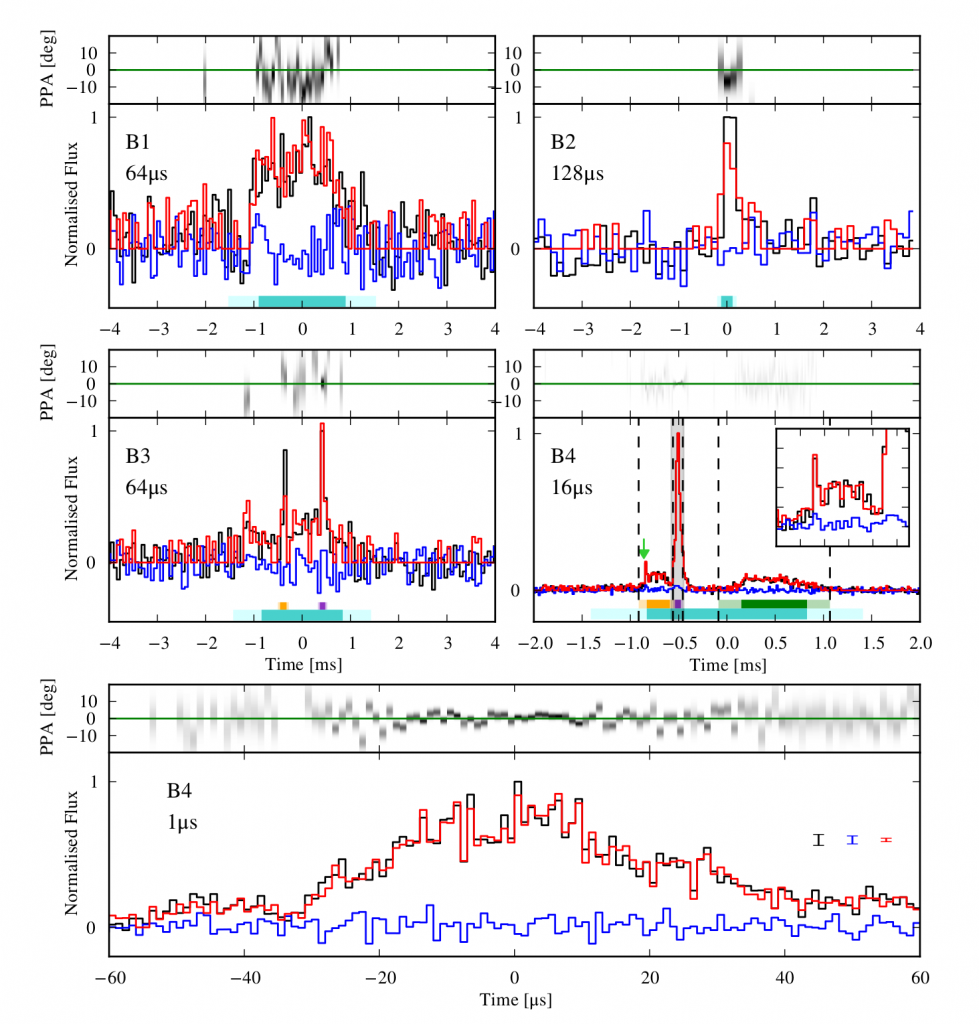Microsecond polarimetry of the repeating FRB 20180916B by K. Nimmo, J. W. T. Hessels, A. Keimpema, A. M. Archibald, J. M. Cordes, R. Karuppusamy, F. Kirsten, D. Z. Li, B. Marcote, and Z. Paragi
Fast Radio Bursts are millisecond-long incredibly bright radio flashes from distant galaxies. They are clearly produced by some kind of coherent emission process but the details or even basic nature of this process remain mysterious. Observational clues as to what it might be are few and far between, but polarization can provide hints about the geometry and magnetic fields in or near the emitting region. For this paper we managed to find polarization structure at very short timescales inside the burst – this is a clear sign that relatively small structures are producing elements of the radio burst. We still do not know what kind of structures these might be, but the Crab pulsar produces “giant pulses”, albeit still many orders of magnitude fainter than fast radio bursts, from coherent emission regions about 30 cm across. So this hint at detailed small-scale structure in fast radio bursts sheds a little light on their still-mysterious origin.

